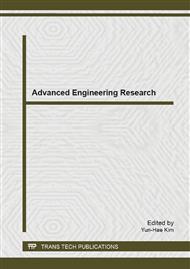p.1158
p.1163
p.1167
p.1171
p.1175
p.1181
p.1189
p.1194
p.1202
Multi-CPU Parallel Computing System with Mixed Modes
Abstract:
Multi-CPU[1] parallel computing system [2] with mixed modes is the product of parallel computing idea. Control system cannot guarantee real-time control performance due to limitation of computing speed while utilizing complex control algorithms, so operating efficiency of the system needs to be solved. High-speed computing [3] system is needed. Parallel algorithm [4][5] is an effective way to improve computing speed. Mixed-mode parallel computing system is a hardware platform with multiple parallel computing modes. Users can directly change the connecting mode between computing modules through jumper, and the diversity of communication modes provides solutions for various problems.
Info:
Periodical:
Pages:
1175-1180
Citation:
Online since:
April 2014
Authors:
Price:
Сopyright:
© 2014 Trans Tech Publications Ltd. All Rights Reserved
Share:
Citation:


